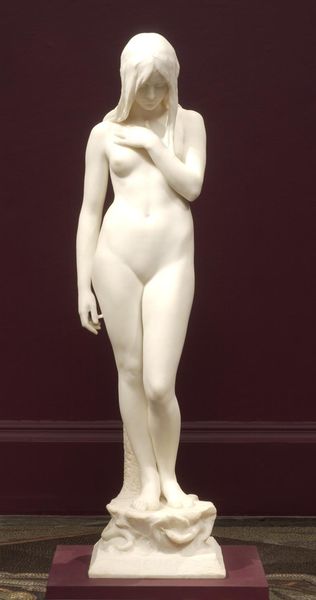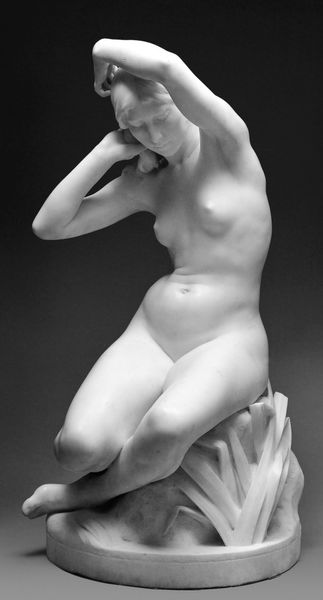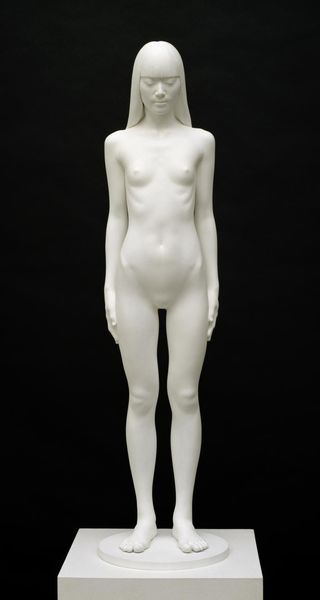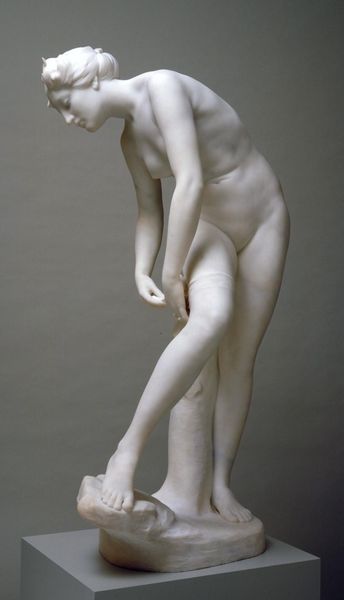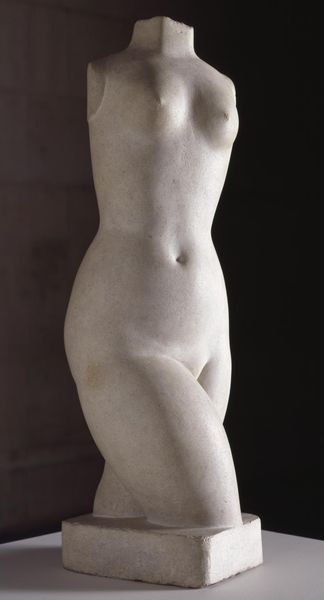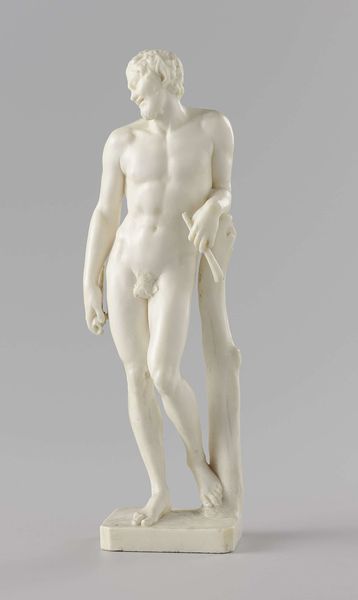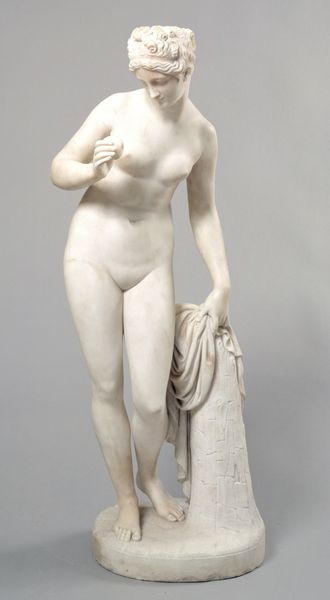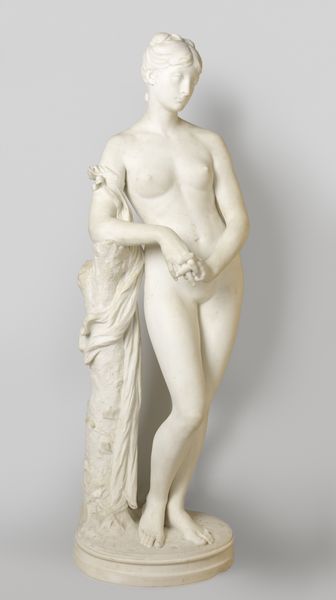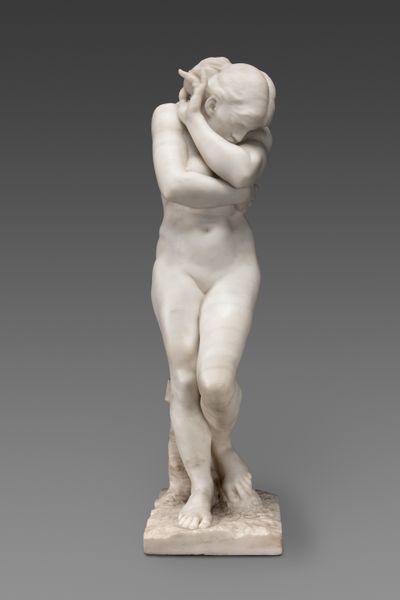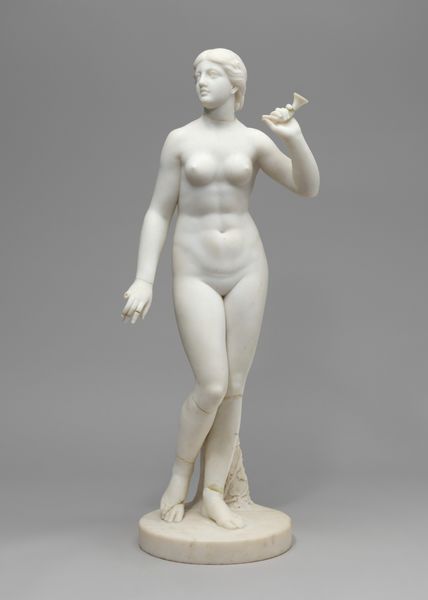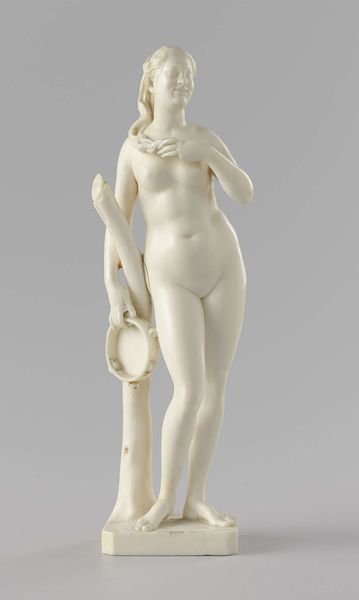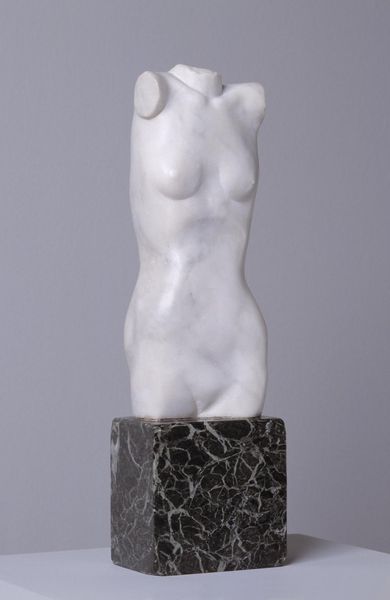
Dimensions: 163 cm (height) x 52.8 cm (width) x 47 cm (depth) (Netto)
Editor: August Saabye's marble sculpture, "Susanna before the Elders," created between 1882 and 1884, is striking in its realism and sensuality. What details about the marble itself and the artistic labor catch your eye? Curator: I'm immediately drawn to the marble's texture. Note how Saabye contrasts polished areas with more roughly hewn sections, particularly the tree trunk supporting Susanna. This tension challenges a purely mimetic reading. How does that articulation speak to 19th century labor and class structures that fueled marble production? Editor: That's fascinating, I hadn't considered the contrast as deliberate commentary. Are you suggesting that the roughly-hewn base, compared to the smooth polish of Susanna, signifies a division of labor or class? Curator: Precisely. Think about where this marble likely came from. Who quarried it? Who transported it? Whose hands were calloused shaping the initial form before Saabye's refined carving? Marble wasn't just material; it was a product of specific exploitative conditions. The high finish suggests a different mode of making: refined and highly skilled labor intended for bourgeois consumption. How might viewing this as a commodity, as much as a fine art object, change our reading? Editor: It pushes the viewer to think about who benefited from the creation of the sculpture, both the artist but also other labor involved. Is that inherent tension then, what Saabye intended? Curator: It’s a layer of possible meanings which speaks to 19th century art’s complex entanglement with industrial capitalism. The nude itself becomes less a celebration of idealized form and more a sign of how value and power were assigned and displayed through artistic patronage. The smooth and finished is, perhaps ironically, also hiding the raw human cost that made the artwork and the society for which it was created. Editor: I'll definitely consider how the materiality of the marble speaks to the socioeconomic context from now on. Curator: Indeed. Every brushstroke, every chisel mark, has a history tied to material conditions, to human actions. That history becomes part of the artwork’s story.
Comments
No comments
Be the first to comment and join the conversation on the ultimate creative platform.
